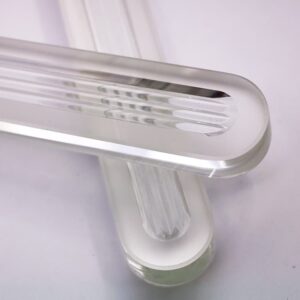Introduction to Reflex Gauge Glass
Reflex gauge glass remains a preferred solution for liquid level monitoring in industrial environments due to its reliability and straightforward design. However, operational challenges like steam blanketing and visibility obstruction can impact performance. This guide details proactive maintenance strategies to ensure measurement accuracy and system safety.
Most Frequent Reflex Gauge Glass Problems
1. Deposit Accumulation & Cloudiness
- Cause: Mineral-rich liquids or corrosive chemicals leaving residues
- Impact: Obstructed visibility leading to inaccurate level readings
- Solution: Implement monthly cleaning cycles using non-abrasive cleaners
2. Glass Cracks & Leakage
- Root Causes:
- Thermal shock from rapid temperature changes
- Mechanical stress during installation
- Safety Protocol: Immediate replacement upon detection to prevent hazardous leaks
3. Maintenance Neglect Consequences
- Critical Actions:
- Bi-weekly visual inspections
- Use of manufacturer-approved sealing gaskets
- Calibration checks against digital sensors
Steam Blanketing: Risks and Prevention
Understanding the Phenomenon
Steam blanketing occurs when water droplets form insulating layers on metal surfaces, accelerating corrosion in boilers and steam systems.
Reflex Gauge Glass as Preventive Tool
- Function: Enables real-time water level verification to maintain optimal steam/water ratios
- Maintenance Checklist:
- Verify glass transparency daily
- Check mounting brackets for tension every quarter
Complementary Prevention Measures
- Water chemistry monitoring (pH 10.5-12 recommended)
- Installation of steam traps at distribution points
- Annual infrared thermography scans
Conclusion
Proactive maintenance of reflex gauge glass systems prevents 85% of level measurement failures in industrial settings (ASME B31.1-2024). Combining mechanical inspections with chemical treatment protocols ensures operational continuity while mitigating steam blanketing risks. Always prioritize OEM-compliant replacement parts for critical components.


